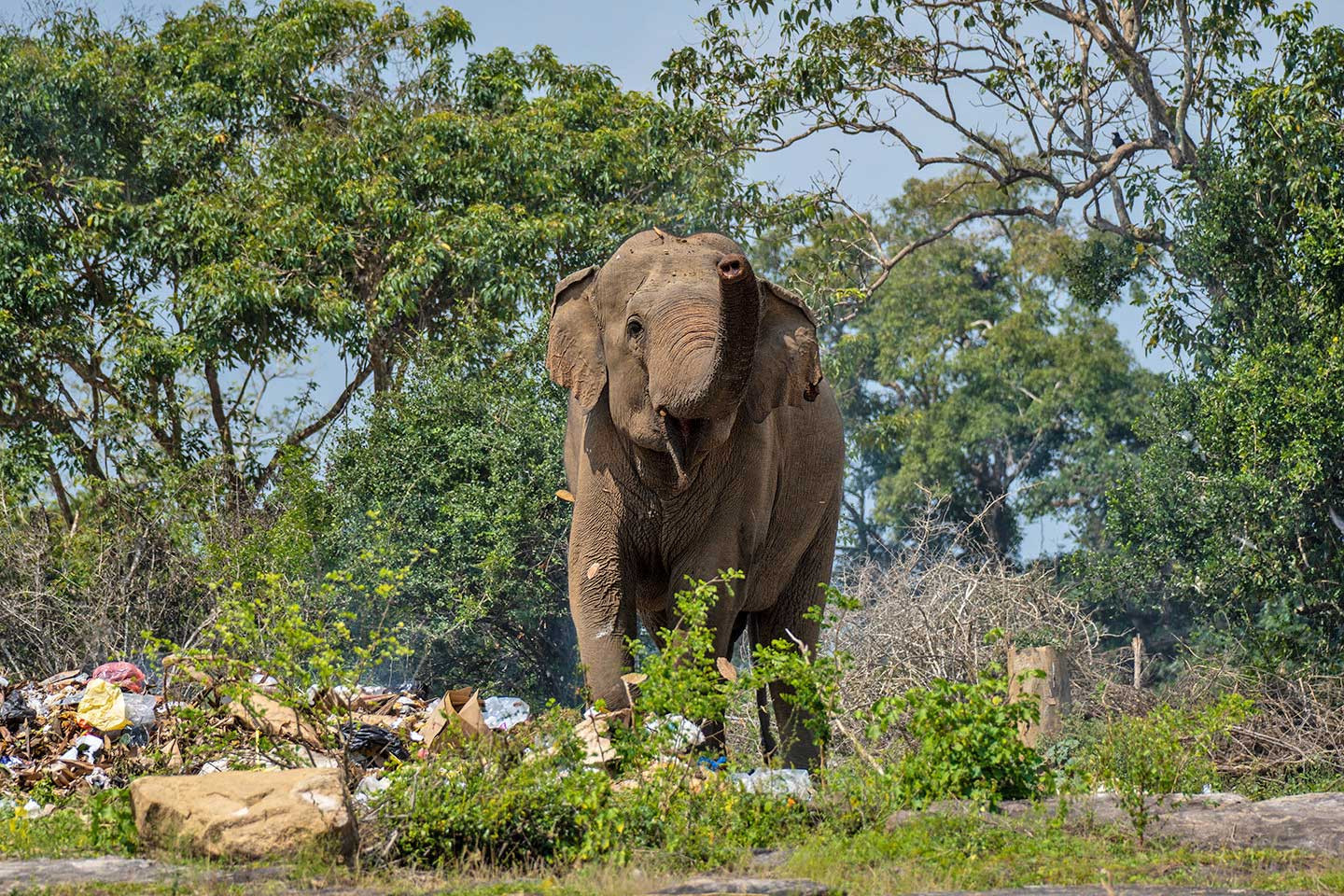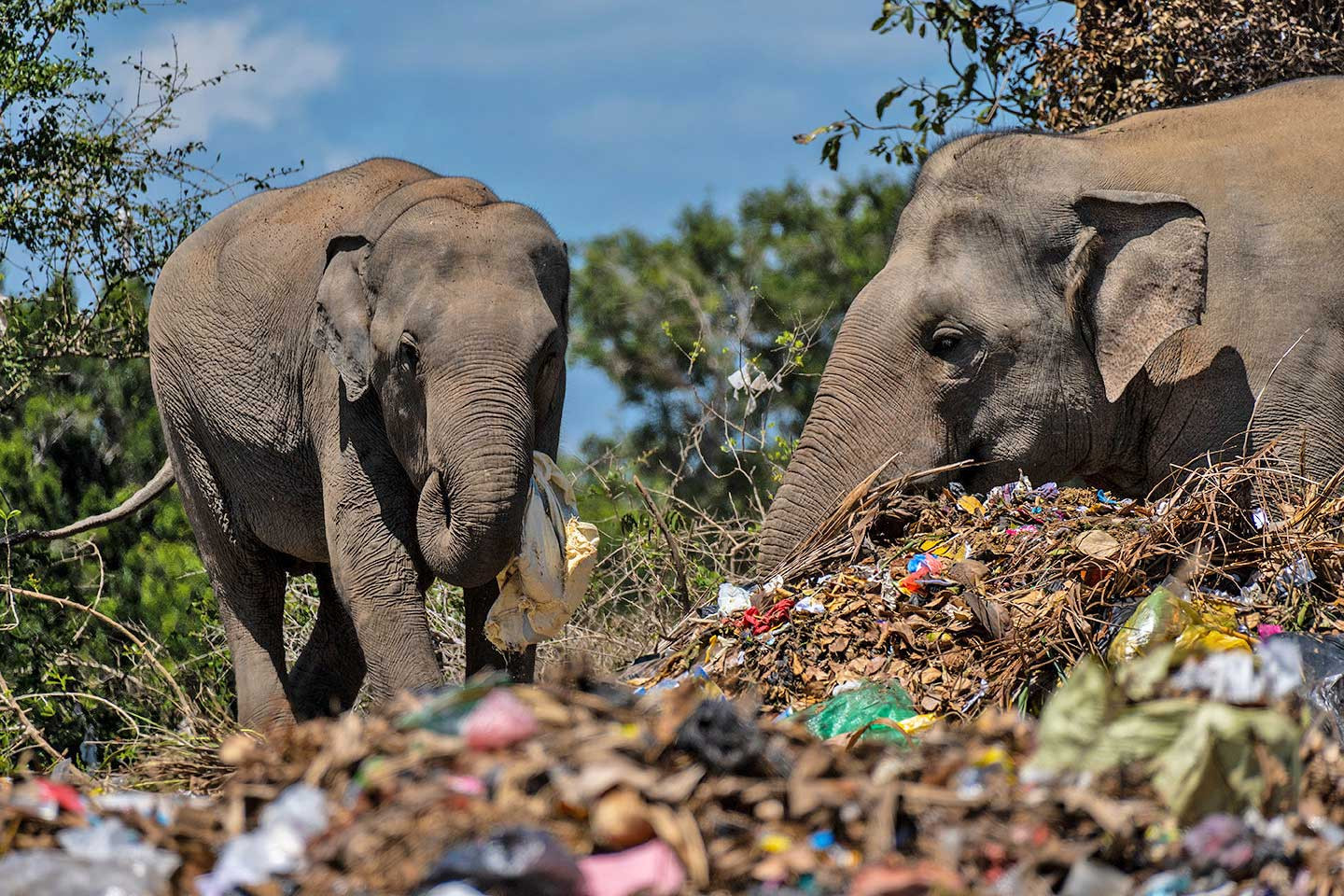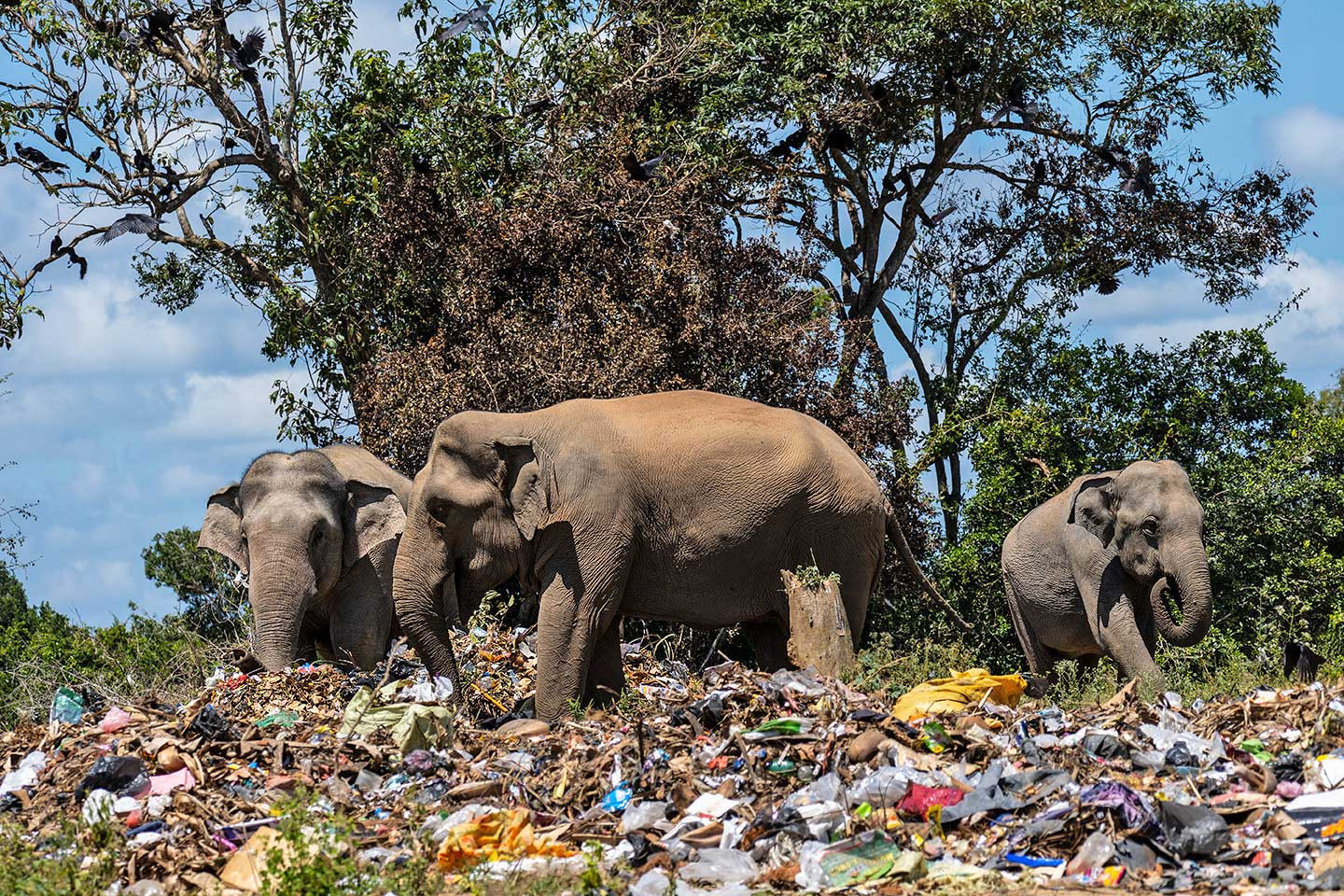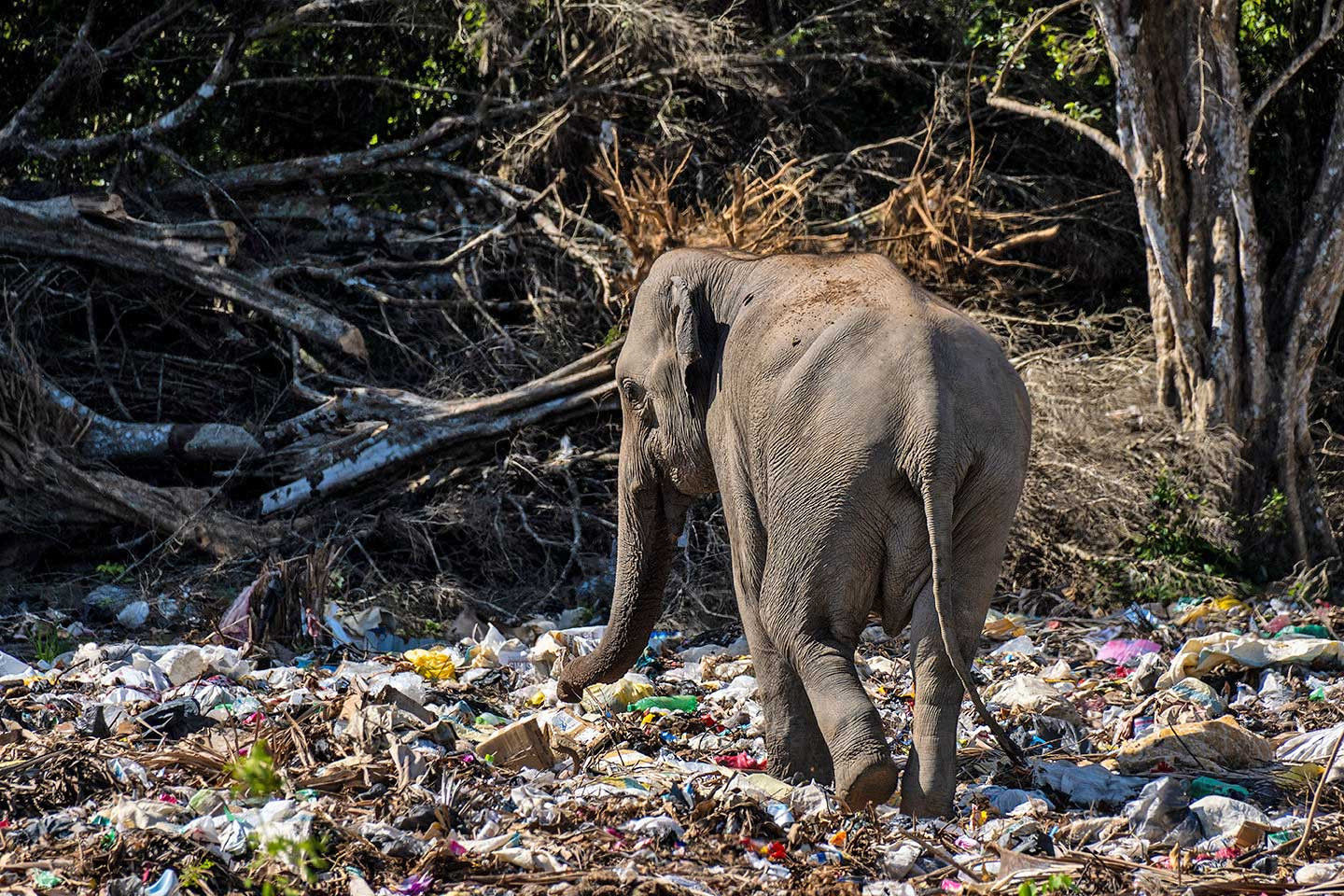During my three-month journey through Sri Lanka, I dedicated myself to photographing its wild denizens. Fascinated to learn about how wild elephants regularly cross paths with humans, especially in parts of northern Sri Lanka, I started documenting these gentle giants and quickly became aware of the increasing threat of human-elephant conflict in the region. Interactions between local communities and the wild tuskers often resulted in the loss of harvest, property and even human life, leading to retaliatory killings.
In this photo series, I focus on a different arm of the Anthropocene that plagues these pachyderms. Garbage dumps and local landfills bordering forests in the Ampara District, Eastern Province, have become regular feeding grounds for wild elephants. It is heartbreaking to watch these majestic mammals wade through oceans of trash in search of food.










